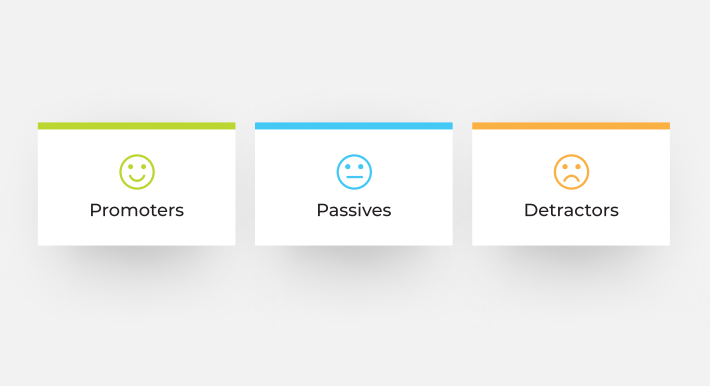They say history repeats itself. Even in today’s constant state of change, elements of this age-old saying continue to ring true, and at no time of year is this more clearly seen, than Christmas.
Every year, we all come out of our shells for a few months of manic shopping and festivities. For many businesses, this is a make or break time for many in retail and a fantastic opportunity to gain new customers—something that we looked at in our last blog post. That’s why here at Customer Radar, we’ve taken the time to collate a bunch of data from last year’s busy season, to inform the decisions you make this year. Are you ready for Christmas?
Putting last Christmas under the microscope
Over the last six months of 2016, Customer Radar studied a range of our key customers in the retail industry. These customers varied from small local businesses, right through to large, nationwide household names. We selected customers from each of the various retail sub-sectors—clothing, heath, homeware, electronics etc., and looked at the performance of NPS (Net Promoter Score, a measure of customer satisfaction), number of detractors, volume of feedback, type of feedback, and timing. Ultimately, this data, based on nearly 250,000 pieces of feedback, shows a fair representation of what the majority of businesses can expect to encounter, heading into Christmas 2017.
Five key trends from Christmas customer experience
Below are a few of the key trends that stuck out like a sore thumb from our 2016 customer analysis:
- Mid-November is when the games begin. When we speak about ‘the busy season’, our study showed that this well and truly kicks into gear mid-November. Virtually overnight, shoppers wake up and begin frequenting stores—and continue all the way through until after Christmas.
- There will be feedback. A big reason why we know so clearly that shopping increases dramatically in mid-November, is feedback does as well. Between mid-November and late-November, quantity of daily, feedback nearly doubles, from around 800 to above 1600. This initial spike settles slightly coming into December, but remains above 1200 until Christmas—a 50% increase on off-peak feedback numbers.
- Detractors (unhappy customers) increase, customer satisfaction decreases. While one of the nice aspects of asking for validated, instant feedback is that you’ll garner positive feedback rather than just complaints, people are still more likely to submit feedback if they’ve had a negative experience (consider it an opportunity for improvement!). This is definitely reflected in the Christmas time feedback of the customers we studied—Net Promoter Score (NPS) begins to fall in mid-November, and drops sharply in mid-December. Most retailers saw a NPS fall of at least 5% across the six week period.
- There’s a people problem. Looking at the specific comments in customer’s feedback, it’s about the people. Most common issues are service, timeliness, helpfulness and friendliness. Typical feedback looks something along the lines of: “Store was busy. Waited half an hour, seemed like the staff didn’t even want to be there. Expected better service given I am a loyal customer.” We’ll take a closer look at how you can get your Christmas staff up to scratch in a future blog post as part of our ‘Are You Ready?’ series.
- Weekdays are critical. Comparatively, weekdays saw a greater drop in NPS. Feedback levels were also proportionately higher than usual, and tended to focus even more on service and expectations than weekends, indicating stores were unprepared for the customer influx.
So, what does this mean?
Believe it or not, we’re not trying to stress you out in advance. There’s some good news—two significant learnings can be gained from last Christmas, which can prevent your business having a significant drop in customer satisfaction in the busy season.
Firstly, the need for preparation is clearly highlighted. Much of the negative feedback around service, friendliness and helpfulness can be front-footed by doing a thorough job of selecting and training your people now. Christmas always calls for extra staff, so having fresh faces on the floor is not always possible. However, what is avoidable, is having newbies who don’t know what they should be doing. Getting new staff on board late-October or early-November can make all the difference come the mid-November rush. There’s nothing worse than trying to train someone amidst the Christmas mayhem—our data shows, it just doesn’t work.
Secondly, gathering validated, instant customer feedback provides a platform for your business to improve. It’s inevitable that you’ll get a few pieces of negative feedback over the coming months. Take heart though—this is actually a fantastic opportunity to recover unhappy customers and improve your business. It’s up to you whether you proactively ask for feedback, respond to it, and take the action needed to prevent the issue from occurring in the future. Having the ability to receive, analyse, and respond to feedback immediately is crucial to ensuring that small issues don’t snowball into large, customer-losing nightmares.
This year, the choice is yours. Charge straight into the Christmas season without fully training your people or committing to being responsive to feedback, and history tells us you’ll have a rough time. However, by investing a little extra into your people, and setting up the right systems for feedback, this Christmas can be the best yet.






